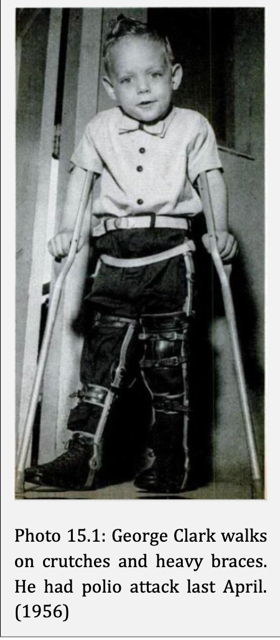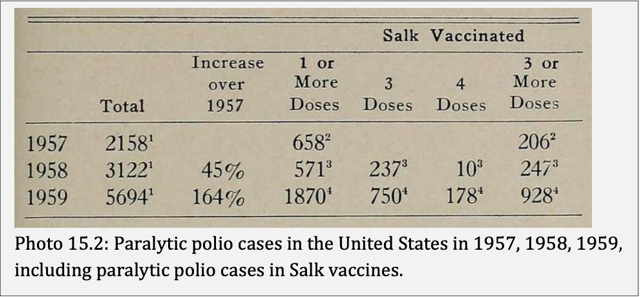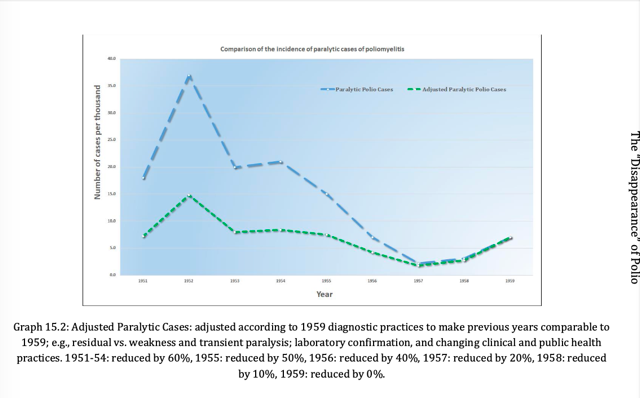THE eradication of polio has been hailed as one of the great vaccine success stories. Yet one professor disagrees and says polio data is an exercise in smoke, mirrors and sketchy statistics. Polio cases have been hidden by redefining the disease, and unthinkably, vaccines can cause paralysis, the very symptom they are designed to prevent. Finally, polio is not just a virus, it is also caused by toxins in the environment, the result of pesticide poisoning.
The image of children crippled by the disease strikes fear into most parents who consider vaccination against it vital. Few doctors have researched poliomyelitis and blindly accept the vaccine miracle. Scratch the surface, track down its origins, and the picture looks entirely different.
‘Many believe that polio has been eradicated by vaccination in the West,’ said kidney disease specialist Dr Suzanne Humphries, who worked as a nephrologist in the conventional medical system for over 20 years and witnessed vaccines causing kidney failure. ‘But to fully understand where it went, we must understand what polio was. Once you understand that, it becomes clear that it is impossible to eradicate it with a vaccine. However, the vaccine did lend itself to many well-documented – although not well-known – problems.’
Poliomyelitis describes paralysis in the legs caused by inflammation of the grey matter in the spinal cord which can also affect the brainstem. The inflammation causes the horrific problems we associate with polio and your mind jumps to images of child victims, strapped into painful-looking callipers to correct hip and leg deformities. Or worse, locked in an iron lung to aid breathing difficulties caused by the most serious and deadly form of polio, bulbar poliomyelitis.

Polio paralysis was a rare phenomenon, not common, and not the only disease that caused paralysis. Rheumatic fever could damage heart valves and crippled more children per year than polio, but no vaccine was ever developed to prevent it and we rarely hear about it today.
Dr Humphries said: ‘It was later revealed, after a vaccine was lauded for the eradication of polio, that much of the crippling was related to factors other than poliovirus, and those factors could not possibly have been affected by any vaccine.’
There is a list of diseases and environmental factors that cause polio-like paralysis. Common environmental factors are lead, used in paint, arsenic and the synthetic chemical DDT (dichlorodiphenyltrichloroethane), historically used in pesticides. DDT was used widely during WWII to control malaria and typhus and is now largely banned worldwide. The widespread paralysis blamed on poliovirus in the 1940s and 1950s was due to the widespread spraying of the pesticide DDT.
Other viruses have the same pathology. Coxsackie causes infection of the brain and spinal cord while ECHO causes encephalitis. Transverse myelitis is inflammation of the spinal cord, while the autoimmune condition Guillain-Barré syndrome (GBS) attacks the peripheral nervous system causing paralysis from the feet upwards. Intramuscular injections, including vaccines, can cause it, as can hand foot and mouth disease, and undiagnosed congenital syphilis.
Before 1954, patients who experienced paralysis for 24 hours or less were diagnosed with polio. In 1955, the year American virologist Jonas Salk’s ‘experimental’ vaccine was released – fast-tracked, and approved in a record-breaking two hours – the diagnostic criteria became more stringent, which made a huge difference in documented cases. Unless paralysis was still evident after 60 days, polio was discounted.
The incidence rate was also redefined. Before Salk’s vaccine, the National Foundation for Infantile Paralysis (an earlier name for the illness) said 20 cases per 100,000 constituted an epidemic. After Salk’s vaccine the threshold was raised by 75 per cent to 35 per 100,000. This resulted in fewer declared epidemics and made the vaccine look like a hero.


Cases of polio increased the more shots people received. The statistics above show that by 1959, polio had increased by 164 per cent.
In the Chicago Sunday Tribune, journalist Joan Beck’s 1961 article ‘The Truth About the Polio Vaccines’ said: ‘Four years and 300million doses of Salk vaccine later, we had in 1959 approximately 6,000 cases of paralytic polio, 1,000 of which were in persons who had received three and more shots of Salk vaccine.’
The programme began at the beginning of April 1955, and by April 26, there were reports of paralytic polio in vaccinated children, with deaths reported in Idaho and California. Family members suffered too. Salk’s vaccine was supposed to be a killed vaccine, but shedding caused family members of vaccinated children to develop polio.
Dr Alexander Langmuir, chief epidemiologist at the US Centers for Disease Control and Prevention (CDC) from 1949 to 1970, said the 1959 figures were ‘sobering’. Not only was the vaccine failing, but it was causing polio with 23 per cent of cases occurring in people who had received three or more doses of Salk vaccine. In some cases, people died.
A second polio vaccine was produced by Dr Albert Sabin, the live oral vaccine (OPV), and introduced in 1961. Children queued up to receive a sugar cube laced with it, but it too caused polio. By the early 2000s, the OPV was discontinued in the US and many other countries which recognised that children were developing polio after receiving it.
The DDT years, 1940 to 1960, were a disaster for public health. Dr Humphries, who was also assistant professor at the Robert Wood Johnson Medical School, part of the University of Medicine and Dentistry of New Jersey (UMDNJ), said: ‘Insects were not just the bane of cattlemen and farmers. Flies were believed to spread polio outdoors and in the home. Fearful parents sprayed DDT on their windowsills and sprinkled it on sandwiches in their children’s lunch boxes. DDT in water was used to rinse clothes, bedding, and mattresses. It was thought to be a “safe and effective” insecticide. Safe enough to spray at public beaches and directly on to children in an effort to halt the spread of polio. Most people thought DDT was non-toxic and actually good for them. This is despite the Journal of the American Medical Association stating in 1951 that DDT was toxic to the central nervous system and caused many health problems in humans, including flaccid paralysis.’

From 1910, the Rockefeller Institute for Medical Research in New York set out to marginalise natural and holistic medicine in favour of pharmaceuticals. A few years later, it cultivated a strain of polio, codename MV, which seemed to escape from its laboratory. The Open Vaccine Journal reported that Rockefeller scientists passed ‘passaging spinal cord tissue containing poliovirus, from one rhesus monkey spinal cord to another’. This proved lethal. In 1916, an epidemic broke out with the Institute at its epicentre. The Journal considered it a ‘remarkable coincidence that a unique neurotropic (a pathogen that invades the nervous system) strain of poliovirus was developed a few miles from an epidemic caused by a uniquely pathogenic strain of the virus.’
Then there was the Cutter disaster in 1955. Cutter Laboratories, now owned by German pharmaceutical giant Bayer, mistakenly produced 120,000 doses of polio vaccine that contained live polio virus grown on monkey kidneys. It caused, rather than prevented, polio. The ‘hot lots’ led to an epidemic in families and communities. Ten children died, 70,000 developed muscle weakness, 164 developed paralytic poliomyelitis and 220,000 were infected with live polio virus.
The process used to kill the virus was not effective, but Salk had concealed data showing his method of inactivation was not foolproof. The National Foundation for Infantile Paralysis (NFIP), founded by Franklin D Roosevelt* in 1938, employed polio vaccine researchers from the Rockefeller Institute and were behind the push to get the vaccine approved. Any scientist asking awkward questions or disagreeing with the NFIP was fired. We still see this time and again in the scientific community. Dissenters are destroyed.
Dr Paul Offit, a supporter of mandatory vaccination and inventor of the rotavirus vaccine, wrote a book about the Cutter incident. In it he admits that ‘the disease caused by Cutter’s vaccine was worse than the disease caused by natural polio virus’.
The stark truth is that 75 per cent of Cutter’s victims were paralysed for life. People trusted the doctors and scientists, and many paid a heavy price.
Read more about polio and its origins in Dissolving Illusions: Disease, Vaccines, and The Forgotten History by Suzanne Humphries MD and Roman Bystrianyk. Also visit dissolvingillusions.com.
* US President Franklin D Roosevelt was diagnosed with polio in 1921 age 39. A team of modern researchers concluded that he had GBS, not polio.











